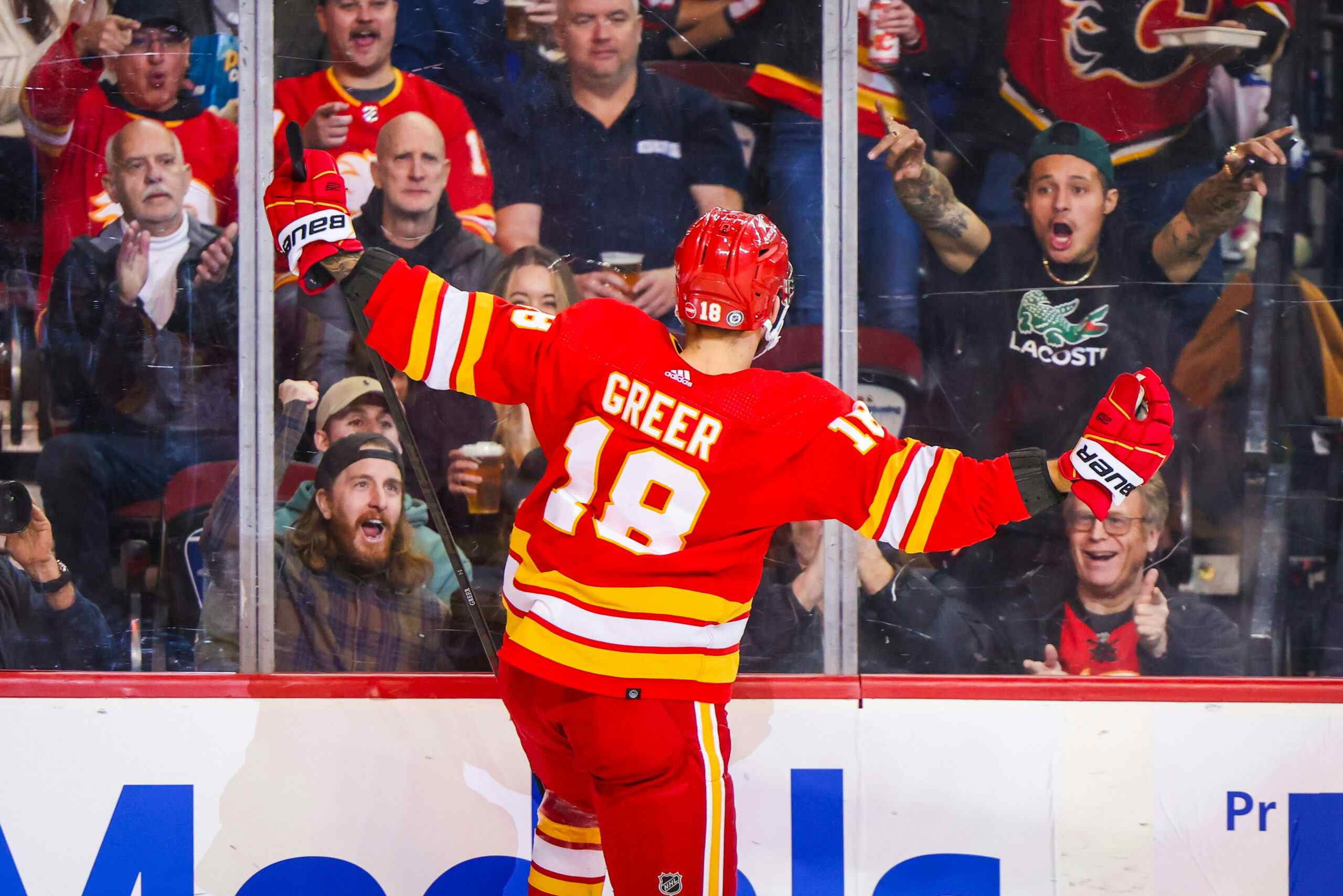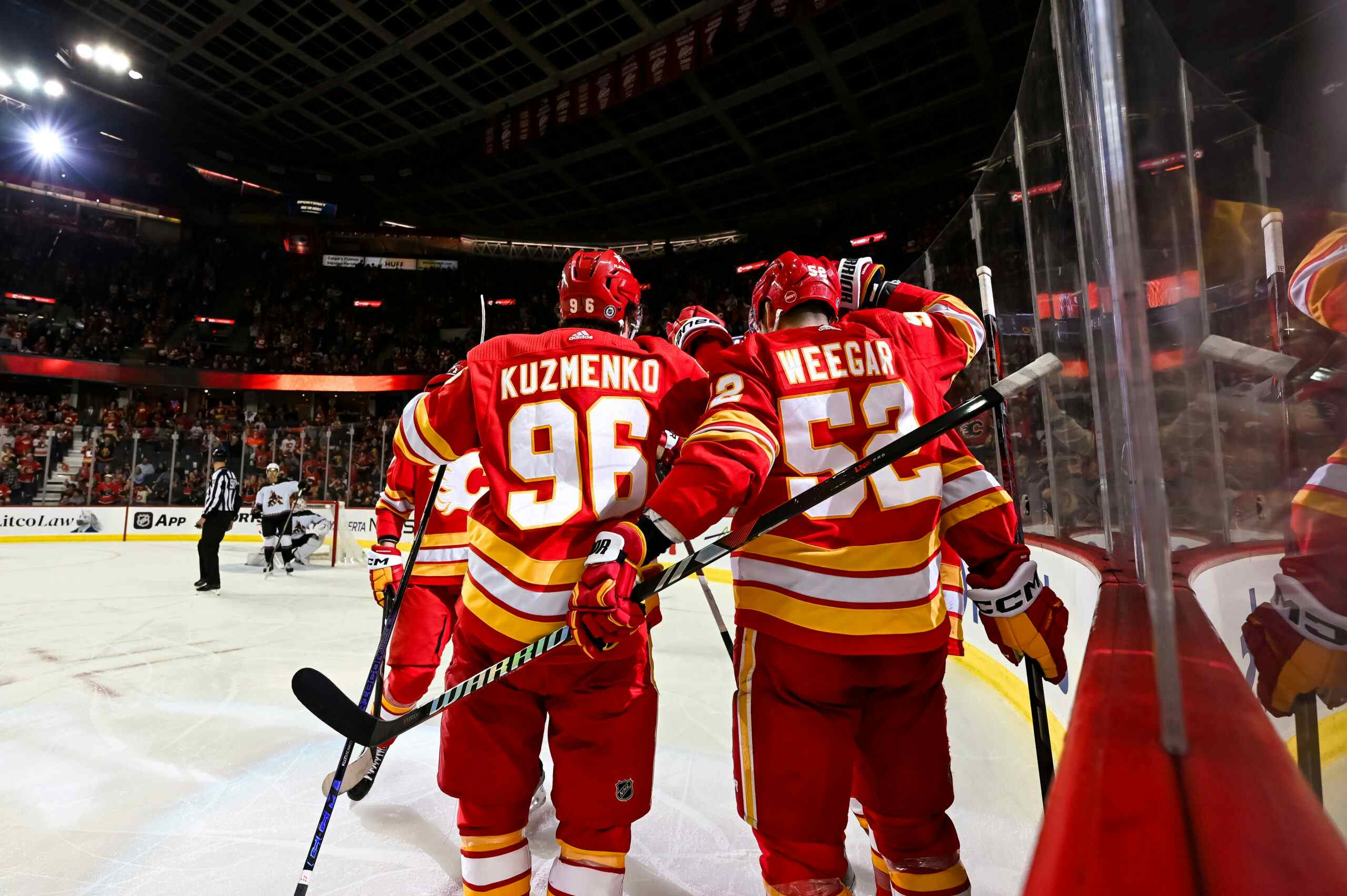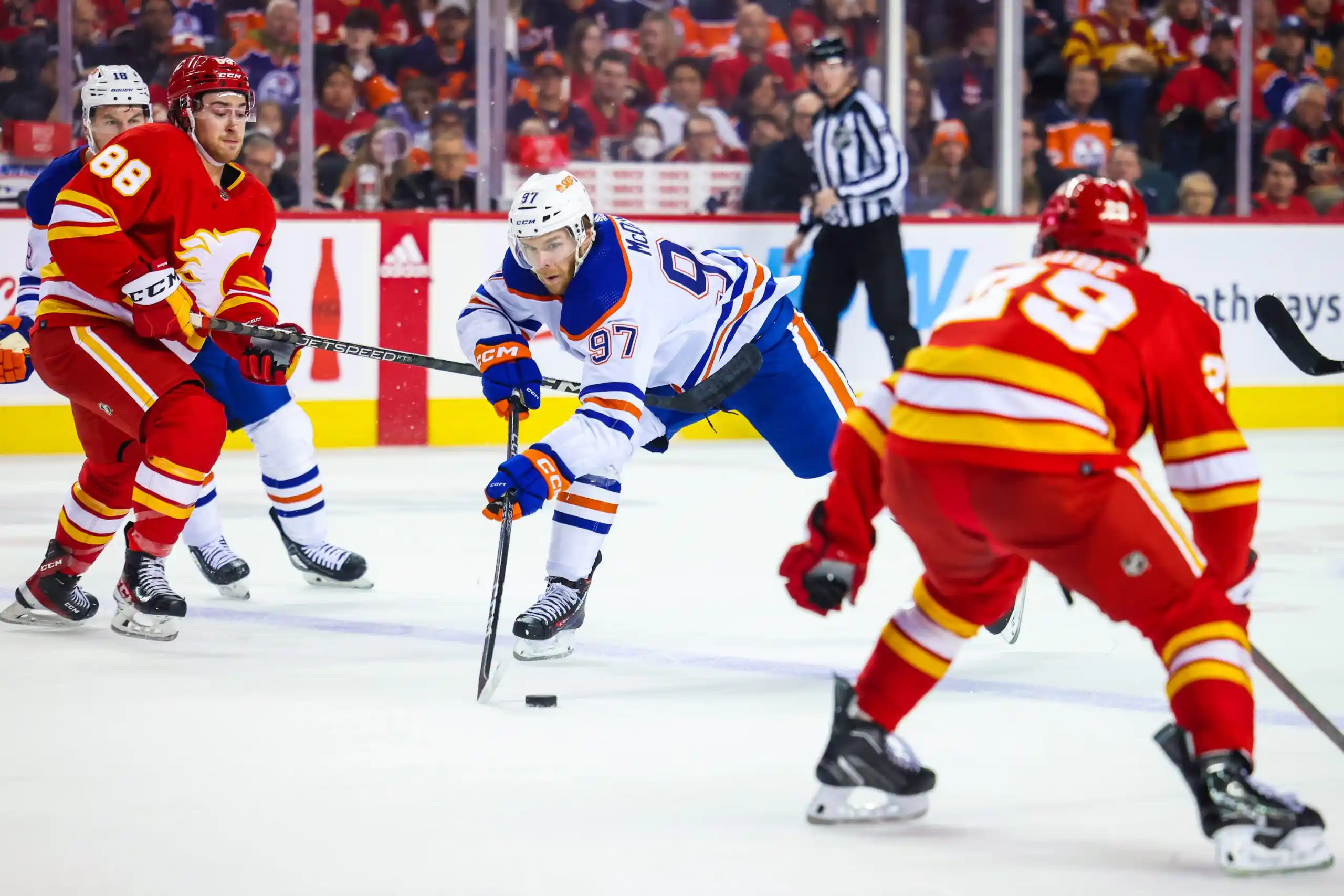FlamesNation Player Evaluations: Micheal Ferland
By Ari Yanover
8 years agoThanks to an incredible first round playoff series against the Vancouver Canucks, Micheal Ferland entered the 2015-16 season with decently high expectations. He did, after all, possess something the Flames were somewhat lacking in: size. At 6’2 and 208 lbs. (not to mention being a pretty solid fighter in his own right), Ferland brought a new dash of truculence to the lineup.
But it wasn’t just that: at 23 years old, he brought potential. And with a junior scoring career vastly outshining Lance Bouma and Brandon Bollig’s – a point per game in his draft+1 year, a 1.4 point per game player as a 19-year-old in the WHL (albeit one whose linemate was Mark Stone) – there was offensive potential there as well. Ferland could be a big scoring winger if he met it.
He did not. Not last season, at least, and it’s something he may never meet.
Season summary
Ferland, newly waiver-eligible, had a spot in the NHL to start the season. He suffered a few injuries here and there, but with 71 games played over an 82-game season, he still got most of the year in. And that year saw him score four goals and 14 assists for just 18 points.
Yeah, not exactly the kind of numbers one would be looking for in a potential offensive player. True, he did only shoot at 3.3%, and he would, at times, show moves throughout the season that left you wondering just why the puck wouldn’t go in for him, but with the opportunities he had, he should have been scoring more.
Ferland spent over 150 even strength minutes with Sean Monahan and Johnny Gaudreau as an experiment on the top line, and it never worked out: he only assisted on one of their goals each, and that was it. He spent substantial time with Sam Bennett as well, and though they looked to be forming chemistry at first, only four goals came as a result of their playing together.
Ferland also played 73:45 on the powerplay (11th on the Flames; seventh amongst forwards) and only had two points to show for it. He played just 10:48 on the penalty kill. He averaged just 12:37 a game.
Ferland’s 2015-16 season points towards him being a bottom six player.

Via OwnThePuck, there isn’t enough data on Ferland yet for him to get his own HERO chart (and the misspelling of his first name through his rookie season is causing some havoc), so here he is, on the left, compared to another Flames player with a similar skill set: Bouma (right).
Immediate impression: Ferland is substantially better than Bouma. He put up points at far better rates, and is significantly better at suppressing shots to a laughable extent (and Bouma spent a fair amount of time with Mikael Backlund, who is really, really, really good at that sort of thing).
Second impression: This is a player whose game seems fairly suited to the third or fourth line. You know – the role he played during that impressive first round series against the Canucks.
Impact on team
Top left has players in most difficult circumstances: more defensive zone starts and tougher competition. Bottom right has players in easiest circumstances: a lot of offensive zone starts and weak competition. The bigger a player’s circle, the more he plays. The bluer, the greater his possession relative to his teammates; the redder, the worse. Click on image for full-sized chart from Corsica.
Ferland was used primarily in a defensive role. His OZS% of 27.29% was the fifth worst amongst Flames regulars. To go with that, it’s important to note that his 48.75% 5v5 CF was eighth out of all Flames regulars, and when it comes to relative corsi, he’s the furthest guy to the left of the chart with a positive reading. Just barely – his 1.32% CF rel is second lowest out of positive stats – but he’s there.
To that note, Ferland’s future use appears clear: a hard-hitting defensive forward who likely won’t score much, but won’t exactly get crushed under the opposition, either.
Ferland had a much better outlook when separated from some of the dregs on his team. He was either a positive possession player – or close to it – once he got away from David Jones, Deryk Engelland, Kris Russell, and Matt Stajan. None of those four players did anything to help Ferland, and only hurt him instead.
Mark Giordano and T.J. Brodie brought him up, while Joe Colborne and Sam Bennett brought him down, but only slightly. The real improvements we see here are performances (with limited sample size) when sharing the ice with Dougie Hamilton and Sean Monahan.
That’s not to say Ferland should be on Monahan’s line; his apparent lack of offensive talent doesn’t justify it. But he was clearly much better than other so-called defensive players on the Flames.
What comes next?
Ferland is a capable player, but barring a drastic change, it doesn’t appear as though he’ll ever be a scorer at the NHL level. And that’s fine.
Where Ferland’s real value comes in is actually being able to play the game, even if he isn’t putting the puck in the net. Teams want big bodied players? That’s all well and good – but they have to be more like Ferland, and less like Bollig (or, at the rate we’re going, maybe even Bouma). He satisfies a desire for size and truculence, all the while actually being able to play a regular shift, and not being a detriment to his team when he does step on the ice.
If the Flames insist on carrying an enforcer type player, then they can (and have, and still are) do a lot worse than Ferland.
Recent articles from Ari Yanover







